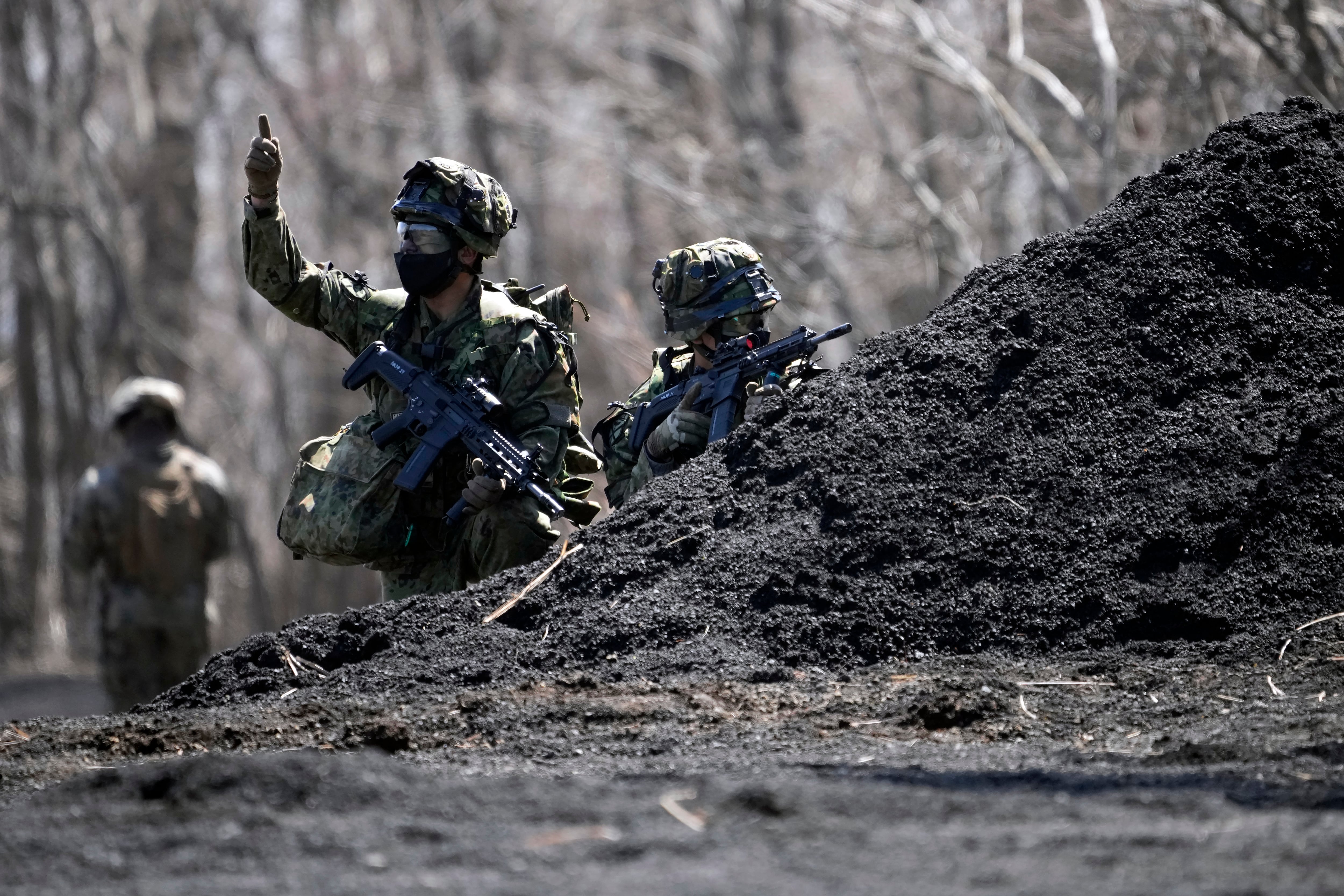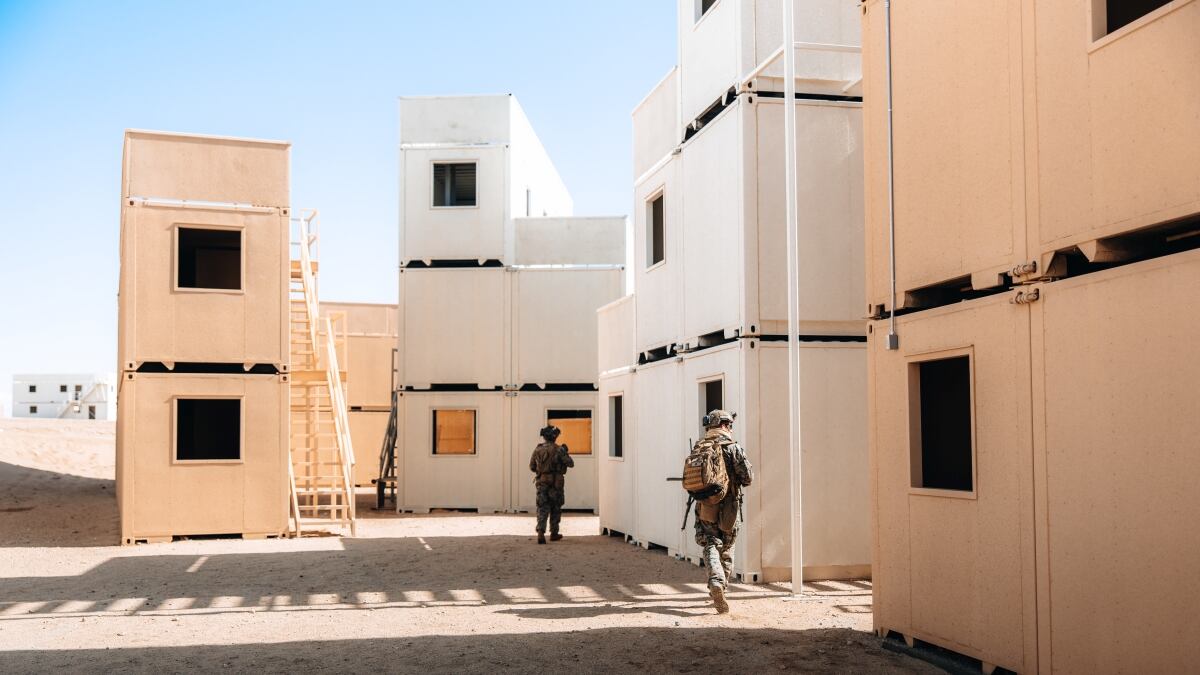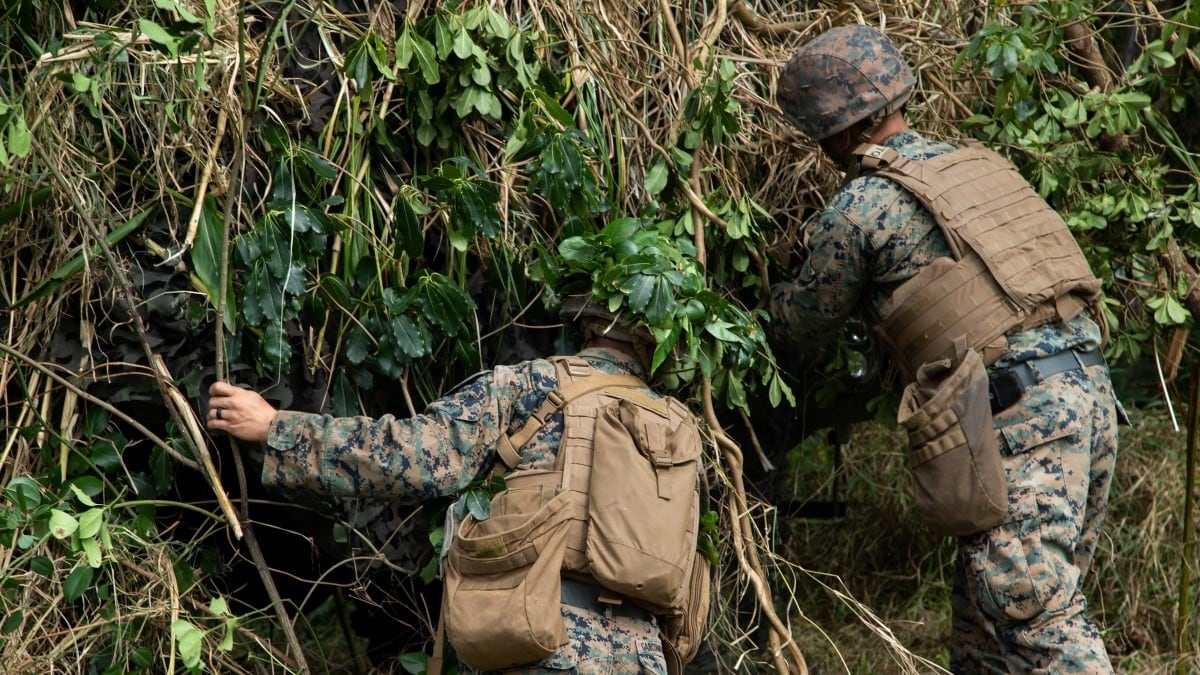A Marine regiment in Japan is getting renamed in November as it prepares to reorganize into a unit focused on sensing and disrupting in China’s backyard.
The United States and Japan revealed in January that the Okinawa, Japan-based 12th Marine Regiment would become the 12th Marine Littoral Regiment by fiscal year 2025. The name change — slated for Nov. 15, the Corps said Tuesday — is a major first step in that transition.
The 12th Marine Littoral Regiment will be the second unit whose mission is to put into practice the Corps’ new spread-out style of amphibious operations in the Indo-Pacific.
“Redesignating 12th Marines on 15 November is the first step in the process of transitioning the unit into an MLR,” 3rd Marine Division, of which the regiment is a part, said in an emailed statement to Marine Corps Times on Wednesday. “Personnel and equipment arrivals, much like 3d MLR, will take place over the coming years. Now, and throughout the transition, 12th Marines remains capable of distributing and integrating into the joint force with allies and partners’ capabilities.”
RELATED

The shift from the 12th Marine Regiment, with an artillery focus, to the 12th Marine Littoral Regiment, with a broader mission, was announced in a U.S.-Japan agreement that heightened the military alliance between the two countries.
American and Japanese diplomats decided in January that the U.S. military needed to boost its presence in Japan, including by placing more forces there with the ability to conduct intelligence, surveillance and reconnaissance.
Marine littoral regiments are meant to serve as “stand-in forces,” groups of troops positioned near an adversary, watching out for aggressive behavior, and working to deter and disrupt it. Stand-in forces are geared particularly toward competing with the Chinese military, as the Corps makes plain in its planning document for the concept.
For instance, a Marine littoral regiment could protect a Navy carrier strike group trying to navigate through a strait, by firing an anti-ship missile at an enemy ship blocking the waterway — a scenario the Marine Corps tested during an August 2022 exercise.
A Marine littoral regiment is made up of three smaller elements: a littoral combat team, a littoral anti-air battalion and a combat logistics battalion. The Marine Corps expects it to have between 1,800–2,000 Marines and sailors, according to the Marine Corps’ explanation of the littoral regiment concept.
The littoral combat team will contain an infantry battalion and an anti-ship missile battery, according to that explanation. It will be able to set up expeditionary advanced bases — small, temporary outposts in contested areas that the Corps hopes will be easy to maintain and hard for adversaries to track down.
The littoral anti-air battalion is supposed to monitor and defend the air in support of the regiment, according to the Marine Corps, while the combat logistics battalion will be tasked with keeping the regiment’s forces fed and fueled even in hard-to-reach or dangerous locations.
The “littoral” name signifies that the regiment will focus on areas close to shore.
Marine littoral regiments will come equipped with the new Navy Marine expeditionary ship interdiction system, or NMESIS, for long-range strikes on enemy vessels; the long-endurance MQ-9A Reaper unmanned aerial vehicle, for intelligence, surveillance and reconnaissance; and the Ground/Air Task Oriented Radar, or G/ATOR, a radar system for air defense.
A now-deactivated 12th Marine Regiment battalion in 2021 tested out the NMESIS during an exercise, firing a missile that flew more than 100 nautical miles before hitting its target, a decommissioned frigate. The deactivation of that unit, 1st Battalion, 12th Marines, took place because the Marine Corps is cutting some traditional cannon artillery in favor of rockets and missiles.
Despite the name, the 12th Marine Littoral Regiment will be only the second regiment of its kind. The first, the Hawaii-based 3rd Marine Littoral Regiment, was activated in March 2022.
The 3rd Marine Littoral Regiment reached initial operational capability at the end of September, Marine spokeswoman 1st. Lt. Erin Scudder told Marine Corps Times via email on Tuesday.
RELATED

But the unit “is a credible force that has been exercising in the theater for the past 1.5 years,” Scudder said via email.
The 3rd Marine Littoral Regiment “maintains the ability to deploy to key terrain on short notice, sense the battlespace, and integrate joint force firepower with allies and partners’ capabilities now,” Scudder said.
The Corps plans to place one more littoral regiment somewhere in the Indo-Pacific, for a total of three, according to the service’s planning documents.
The Marine Corps created the concept for Marine littoral regiments as part of the branch’s Force Design 2030 initiative, a set of sweeping changes to the Corps’ approach and capabilities.
A driver of the changes is the worry that potential adversaries, especially China, could use precision strikes to destroy large, slow-moving U.S. forces.
“Forces that can continue to operate inside an adversary’s long-range precision fire weapons engagement zone (WEZ) are more operationally relevant than forces which must rapidly maneuver to positions outside the WEZ in order to remain survivable,” Gen. David Berger, then the Marine commandant, wrote in the 2020 document unveiling Force Design 2030.
The soon-to-be 12th Marine Littoral Regiment will remain stationed in the Japanese prefecture of Okinawa. But the reorganization won’t bring additional U.S. service members to Okinawa, the Corps emphasized in a news release Tuesday.
Okinawa makes up less than 1% of the total land area of Japan but is home to more than 70% of the Japanese land used for U.S. military bases, according to the prefecture. Locals have protested against the large U.S. presence on the island, complaining especially of noise, crime and environmental impacts.
The regiment’s redesignation ceremony will take place on Marine Corps Base Camp Butler, Okinawa, according to the news release Tuesday.
The 12th Marine Regiment is participating in the training exercise Resolute Dragon, in which the Marines will spread out across Japan’s islands " in a similar manner to what is designed for the MLR,” the news release said.
Editor’s note: This story was updated Wednesday with comment from 3rd Marine Division.
Irene Loewenson is a staff reporter for Marine Corps Times. She joined Military Times as an editorial fellow in August 2022. She is a graduate of Williams College, where she was the editor-in-chief of the student newspaper.




